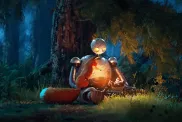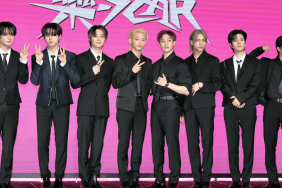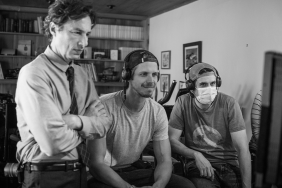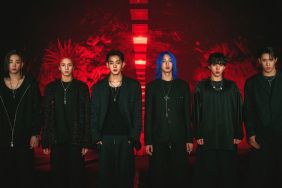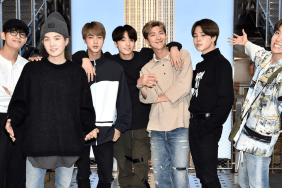
SHOCK takes a look at the superlative pair of giallo hip hop albums TWELVE REASONS TO DIE.
If theres a style of music most associated with the horror genre, its got to be heavy metalthe violence, the unrelenting pummeling, the shrieking shock value of metal easily intertwines with the characteristics of horror. That granted, hip-hop is definitely nipping at metals heels for some recognition in the horror arena, having cemented its own connections to over the past few decades. From very early ventures like Will Smiths innocent pop-rap ode to Freddy Krueger in the 1988 single Nightmare on my Street, to superstar producer Dr. Dre frequently indulging his horror obsessions on wax (his most blatant nod arriving in the form of a John Carpenters HALLOWEEN theme sample on THE CHRONIC 2001 track Murder Ink) to underground horrorcore artists like Necro working gory lyrical excursions into a diehard fanbase. Lets also not overlook weirdo side projects like RZA and Prince Pauls eerie Gravediggaz collaboration, and a number of scary movie soundtracks like TALES FROM THE HOOD or BONES.
Maybe the most pointed melding of hip-hop and horror was when Wu-Tang Clan icon Ghostface Killah teamed with producer and multi-instrumentalist Adrian Younge on a pair of albums titled TWELVE REASONS TO DIE, released on the Linear Labs label. REASONS arent your typical rap releases: they are densely narrative and defiantly conceptual in a genre driven almost entirely by singles and whose fans are not known for rewarding long-form ambitions. The REASONS albums are like aural gialli, marrying Ghosts unrestrained rhymes of undead gangsterism with a stellar and eclectic guest list and lusciously live analog instrumentation by Younge. Ghostface is given the opportunity to flesh out his alter ego Tone Starks, here cast as a ruthless enforcer working for the DeLuca crime family during the nineteen-sixties. Starks is eventually betrayed by a duplicitous paramour and murdered by the DeLucas; his remains then melted down and pressed into twelve vinyl records. Once played, these records summon the vengeful spirit of Starks, now known as (natch) the Ghostface Killah. GFK closes the album by wreaking bloody verbal revenge on the DeLuca family, and seeks to return to the earthly plane through the flesh of his young son in the sequel.

The REASONS albums are of an unlikely brilliance, spinning a spooky mythology and hypnotic rhymes that often verge into the feel of old-time radio theatre and backed by Younges earthy groovesones very deliberately evocative of the soundtrack work by Goblin, Fabio Frizzi and Ennio Morricone. A lot of European composers were asked by (film) producers to make a soundtrack that sounded like American blaxploitation music, so you have classically trained musicians trying to re-create American funk in this cinematic style. And the way they did it was very interesting and unique. Younge told the Boston Globes Martin Caballero during a tour to promote the first REASONS album.
Its puzzling why music that appears tailor-made for fright fans hasnt found more traction within the horror community, and so SHOCK reached out to Linear Labs C.E. Garcia, the man responsible for the REASONS albums intricate storyline, to dig deeper into the process behind the albums.
I went to high school with Adrian Younge, Garcia says of his origins with Linear Labs. Right now the vinyl culture and sampling is pretty big, but he and I were doing that in the nineties when it wasnt so popular. We listened to a lot of strange music, and it was almost like we were kindred spirits in a sense. Ive always worked with him on his musical journeys because I think I was one of the earliest people who understood what he was trying to do. Primarily, Im a musician and a songwriter and producer; I have a background in comics and I love films, so when the TWELVE REASONS TO DIE idea came up, Adrian kind of looked toward me to help him figure it out.

The REASONS albums are made with stem-to-stern live instrumentationchunky bass lines, skittering drums, operatic female vocals a la Goblins PHENOMENA, and atmospheric retro organ sounds. Garcia says the decision to eschew soul samples and to write the music from scratch came very early. I want to say from the inception, right from the beginning, he says. Weve always been obsessed with Italian horror film soundtracks, the Giallo film. Everything that Adrian Younge does is always a concept album, so once Yonge was approached to create an album with Ghostface, we thought that theres no better way for us to get this really cool concept together, using an artist who already has a persona out therehe is Ghostface Killah, and hes also Tony Starks, which is his gangster Gambino name. Hes almost like the physical embodiment of that character. So we wanted to incorporate that into the soundtracks that we had always loved and that we had listened to for years. It just fit perfectly. As the radio-friendly hip-hop that tops the charts moves almost entirely toward either cold, digital beats tapped out on a laptop or simply sampling old melodies wholesale, Garcia promises that no consideration was given toward a more populist, commercial direction during the creation of REASONS. If were doing something that, at the end of the day, cant say is derivative of our creative vision, then its not worth it, he says. Its always going to be the artistic drive that propels us forward. We know that the music we create, its not going to be for everybody. Ive read a lot of reviews that said, Well, this isnt hip-hop, because it isnt samples. Honestly, we took it in terms of, Hey, in thirty or fifty years, theyre going to sample from these albums, and make whole new tracks out of them. Thats what hip-hop does: take old records, sample the live instrumentation, and make something new out of it.
Garcia says the process of working with Ghostface Killah on a challenging project like the REASONS albums was seamless and fulfilling. Ghostface was given the music and story beats, and he then went off to interpret the material through his unique rhymes. With the first one, Adrian demoed out eight or nine tracks, then they took my story and said, This will go here and that will go there, Garcia remembers. With the second album, we had a broader story and a bigger concept in mind. It was almost the same process, (Younge) created almost the full track, and we cut the story up into eleven different piecesthis part will be addressed here and such, and let Ghost have at it. We lucked out in having Raekwon on the second one as well, and so we just let them know the points we wanted to hit and let them do their thing.

For those listeners who still dabble in physical media, the sleeve art to the REASONS album is a perfect complement to the music underneath. The art consists of gauzy photos of a prostrate female victim underneath the gaze of a clawed interloper clad in a fencing mask. Garcia says this visual representation of Ghostface was very much a happy accident. Some of that stuff just happened to be right place, right time, he says. I know that (the art directors) were shopping for period piece costumes to dress him in The cover is very reminiscent of ENTER THE 36 CHAMBERS, the first Wu-Tang album, where they have the masks on their faces. It was just one of those things where they were searching for coats and stuff like that they saw the fencing mask and thought it was a really great idea. It would make (Ghostface) into a monster; it all came together at that point.
As befits a project with so much story content, there is also a comic book companion to the albums. In it, the Ghostface legend is described in much greater detail, though Garcia ultimately considers the comic version as a missed opportunity. The comic version was discussed at the beginning, he says. I believe Im credited for the story, though the comic took the (album) story and was inspired by it. What we originally wanted to do was have the comic be a complete fill-in-the-blanks for the albums, but everything happened so fast that these things took their own avenues: the music, the live show, the comic book they all journeyed in different directions and never really met in the middle, unfortunately.
As for recreating the REASONS albums as a live show, there was a large tour mounted specifically for the first album, but the second album has yet to receive its onstage due. Garcia acknowledges the deficit and says, Ill leave that by saying theres always a plan to tour, because people really seemed to enjoy the first one, but they enjoyed the second one a whole lot more. Theres talk of doing (REASONS) as a trilogy, and Ill just leave it at that. (laughs) The first one takes place in the sixties, and the second one takes place in the seventies I think the coolest thing would be to do a NEW JACK CITY-type of album with part three. Then we could take all three of them on tour in a huge production. We always talk about it.
Finally, Ghostface became embroiled in an online beef with a real live supervillain earlier this year, swapping insults with notoriously loathsome pharmaceutical C.E.O. Martin Shkreli. Is there an outside hope that the fictional Ghostface might wreak some lyrical vengeance on Shkreli with the proposed third REASONS album? Carcia laughs, then says diplomatically, The first album was very open and shut, in that Ghost gets his revenge (on the De Lucas), and thats it. When they told me they wanted to do a second one, I was thinking, Man, how are we going to do this when he kind of killed the guy off pretty thoroughly? So I dont know if there would be any real-life villains in the third one. It would have to make sense for us to do it, but that would be interesting. Ill have to make a note of that (laughs).”


